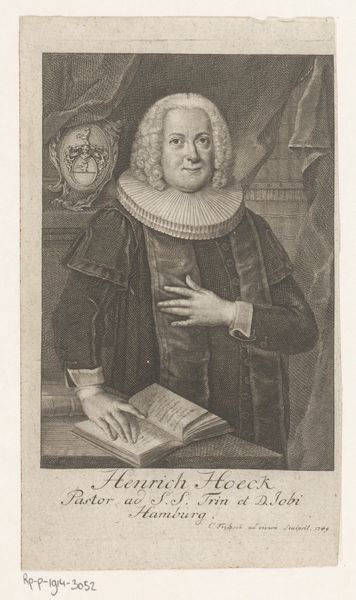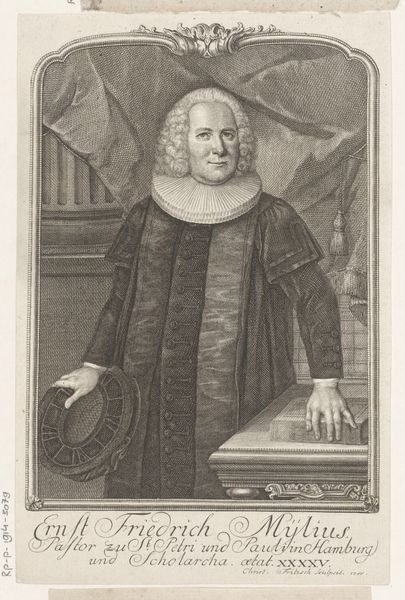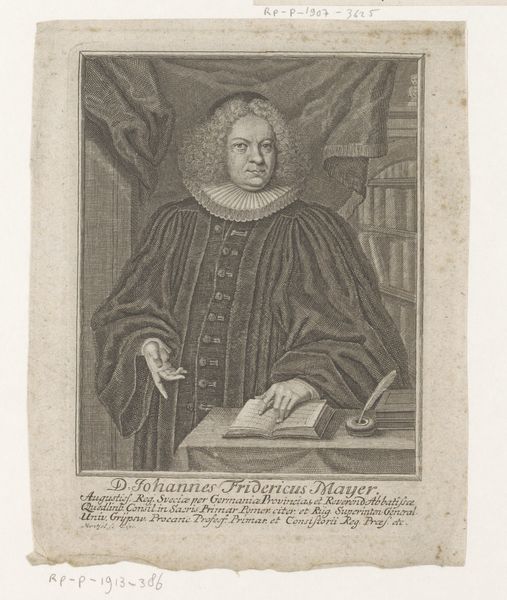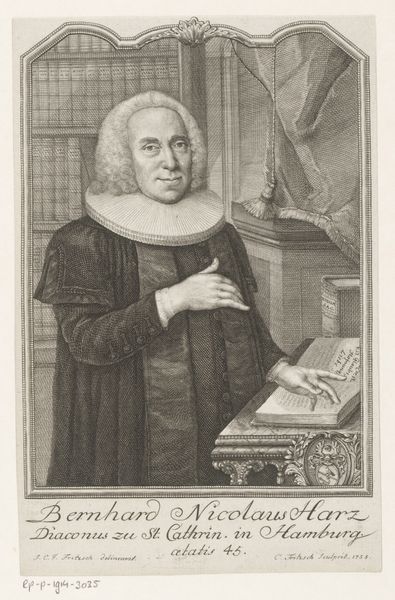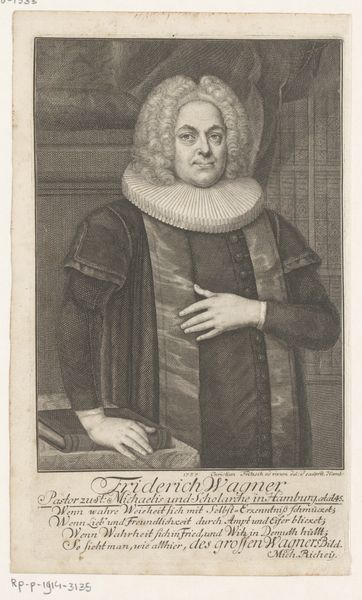
Dimensions: height 146 mm, width 87 mm
Copyright: Rijks Museum: Open Domain
Curator: Take a moment with this engraving, “Portret van Johann Melchior Goeze (II),” dating to somewhere between 1739 and 1791, now held at the Rijksmuseum. Immediately, what’s your take? Editor: My first impression is a blend of formality and pensiveness. There’s a somber quality—a weighty intellectual atmosphere created by the portrait subject. It is very monochrome with a real sense of a period engraving and its specific printing process, the type is beautiful and hand drawn on what seems like a dedicated cartouche. Curator: Precisely. This piece allows us to consider the labor and materials that underpin representation. Engraving demanded immense skill. Editor: Right. Think of the socio-political landscape too; representations of religious figures were very powerful ways to shape perception of what religious virtue and religious leadership embodied. What messages was this piece of craftsmanship sending? The clothing makes clear the status, wealth and class of this individual in their location of Hamburg. Curator: It is important not to forget how class operated at that time and the systems used to show social hierarchy and rank through craft objects. The way an object represents ideas or people of rank relies on understanding of materials and the cost of that object. In contrast today a simple print may allow any member of the public to produce art that makes accessible imagery regardless of financial circumstance. Editor: You are right; there are multiple layers to appreciate. And it brings to light questions of identity. How was Goeze choosing to present himself, and what expectations were there for representing a figure like a pastor during this era? Curator: What really engages me is the transfer of intention through the hand via those engraver’s tools to make this picture. To hold those original tools must be incredible. This engraving also opens doors to examining shifts in cultural production. What’s your overall thought? Editor: For me, it’s a poignant reminder of how art and portraiture like this are entangled with social structures and the individuals they aimed to depict and influence. It reminds us that identity is very closely interwoven to socio-economic and geo-political situation. Curator: Absolutely, by emphasizing both materials and contexts we appreciate the many systems working and see the nuances in artistic outputs through both method and application.
Comments
No comments
Be the first to comment and join the conversation on the ultimate creative platform.


